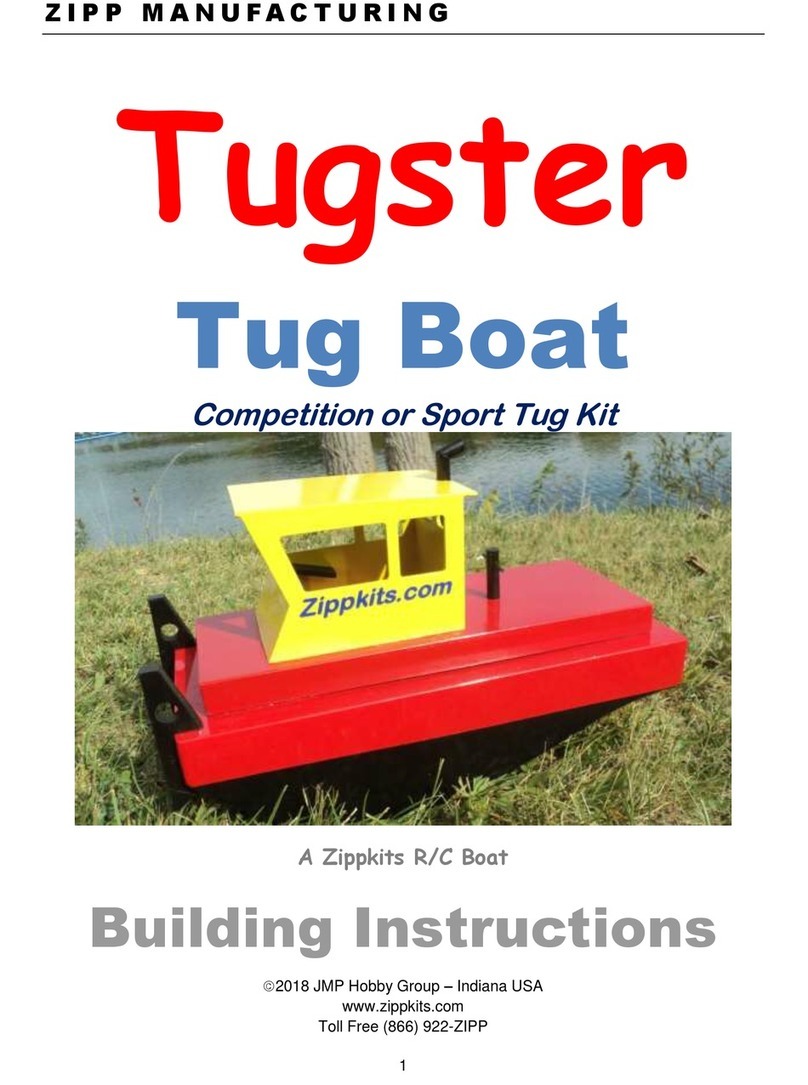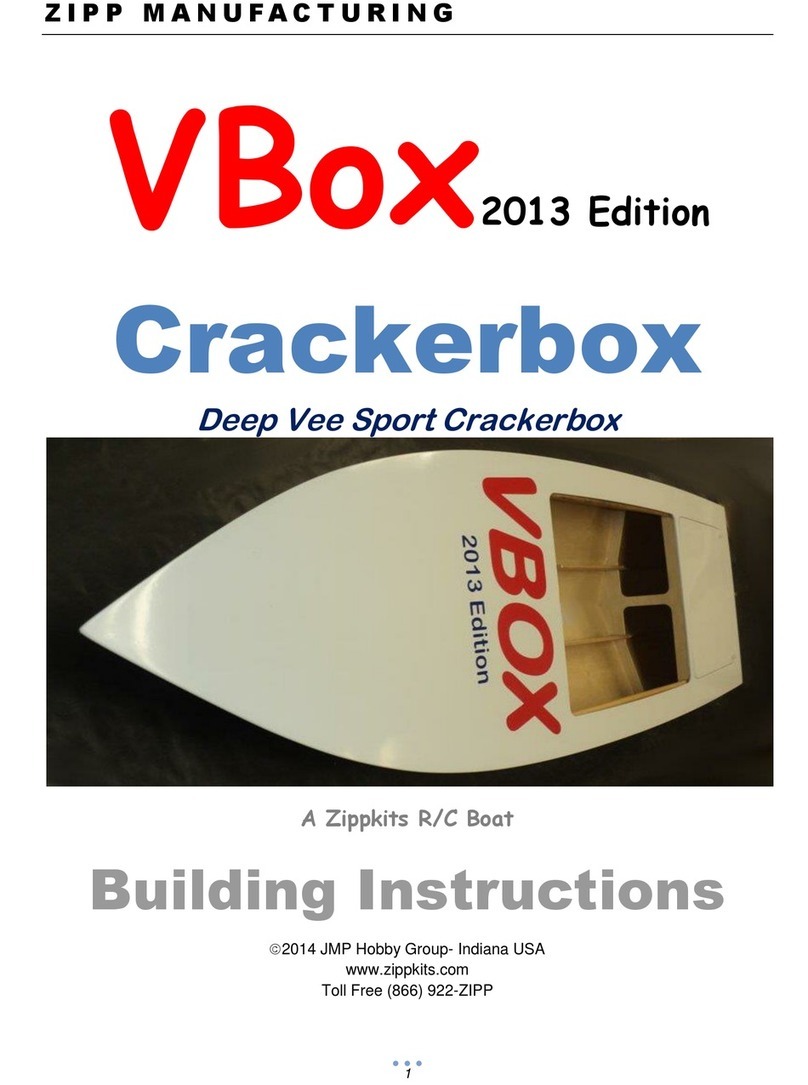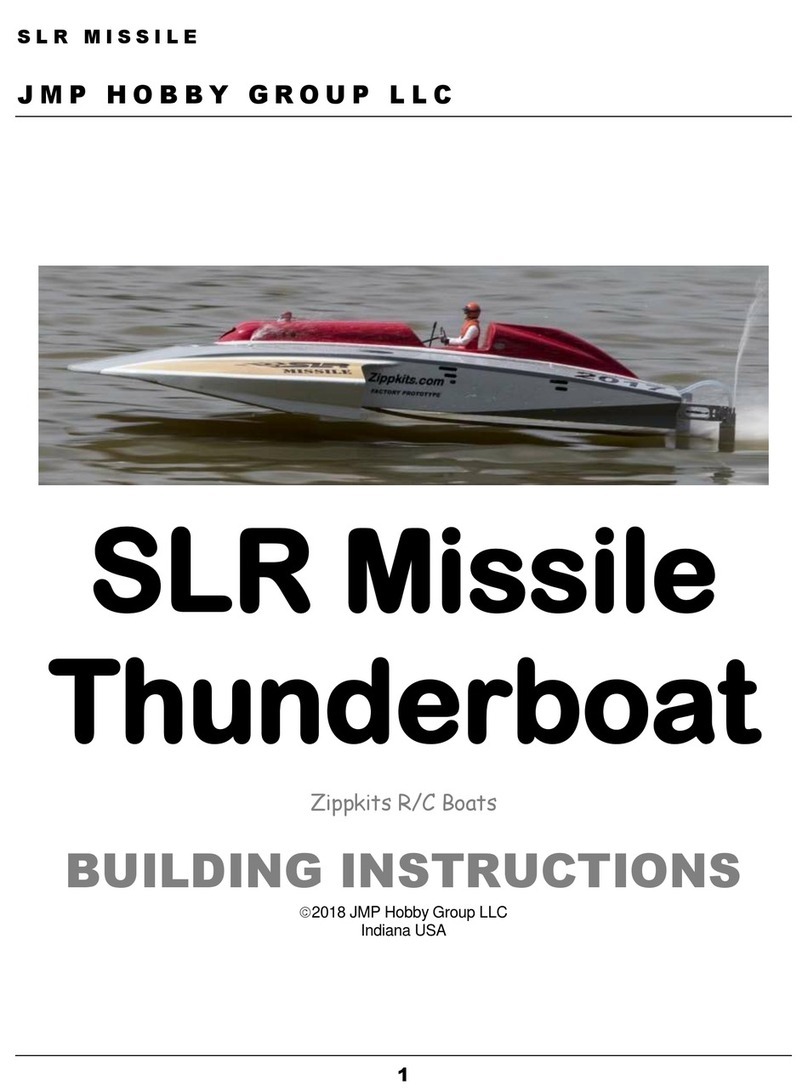
The Envy was developed from the JAE outrigger. The JAE series of boats were designed and
developed as a result of a joint venture between IMPBA Hall of Fame members Rod Geraghty
and Ron Zaker Jr. along with David Hall & Martin Truex Jr.
The main difference between this hull and all the others is the use of sharp edges on the bottom
of the sponsons and tub, as opposed to curved surfaces. This helps break any surface tension
of the water and makes for a faster boat.
This design approach has been built, developed and tested a great deal.
This kit represents the latest gasoline version as of December 2014. The changes we made
were many, yet the boat still looks almost exactly the same. Most of the changes were made so
that the boat was easier to build, easier to setup, handled better, was faster and easier to repair.
Many of the changes were a result of our experience, and some were the result of customer
request.
All in all, this kit is the very best we can make it, thanks to you, our customer.
The kit is not hard to assemble, as all of the hard stuff has been done for you.
That is no excuse to do a poor job with assembly. The better you build this boat, the better it will
run. Often the difference between an excellent building job and a poor one is a simple sanding
block.
A note about overhangs:
This boat is designed to shear water and prevent any capillary action of water. To do this the
tub, ski and sponsons have rear overhangs. These shear the water off and must be left in place
and not rounded in any way.
Take the time to read this entire manual, so that you are familiar with all the building
steps and their proper order. Take your time; make sure you understand everything
before you do it and you will be rewarded with an impressive running hull…
This kit is not a toy. Although R/C boating is a fun and rewarding hobby, it can be dangerous
if not done with common sense and safety in mind. Just about anyone should be able to
build this kit, but it should not be operated by children without close adult supervision.
The manufacturer assumes no liability for damages or other loss in the use of this product, as
we have no control over the construction or end use of this product.
































